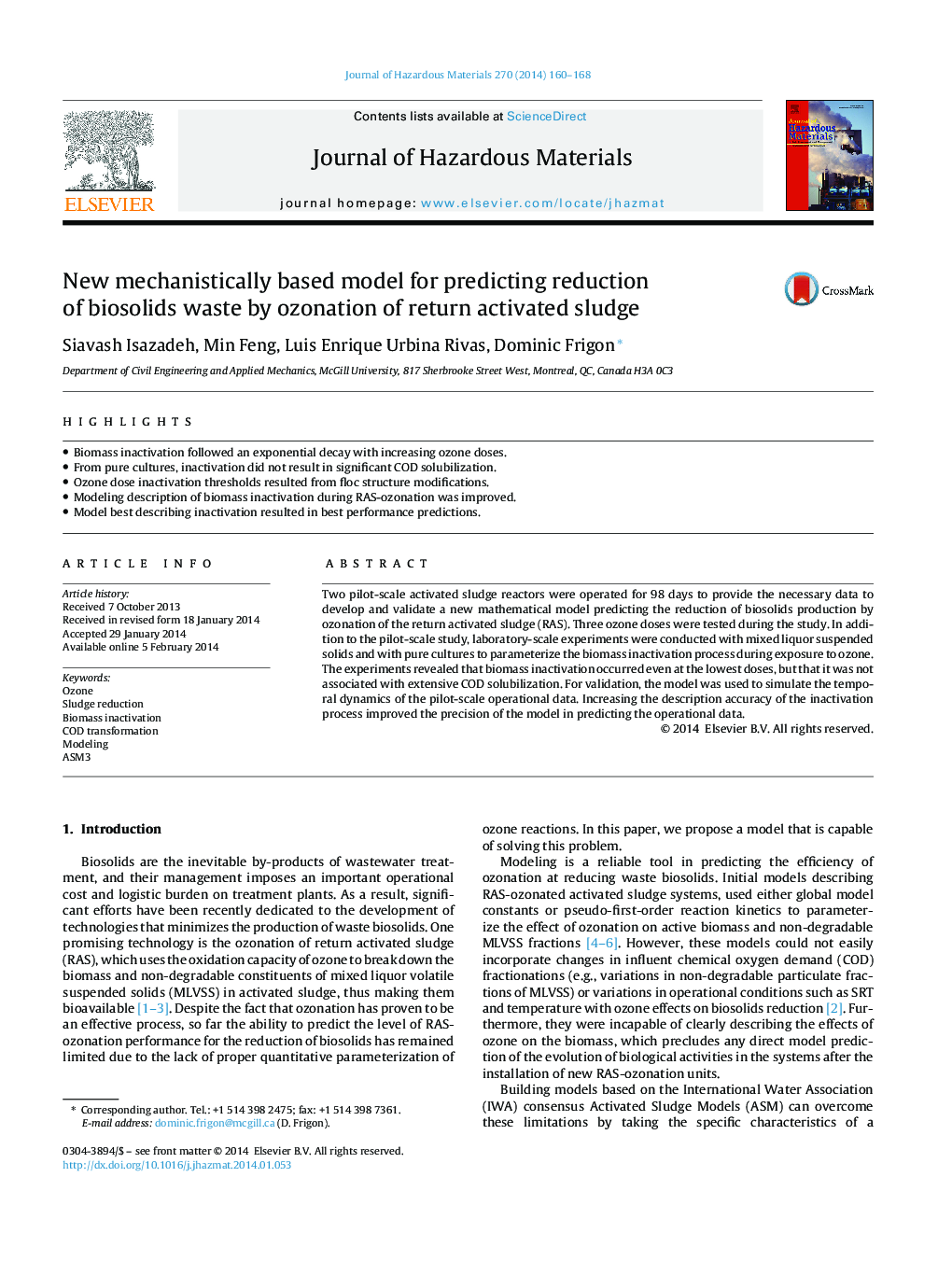| Article ID | Journal | Published Year | Pages | File Type |
|---|---|---|---|---|
| 576891 | Journal of Hazardous Materials | 2014 | 9 Pages |
Abstract
Two pilot-scale activated sludge reactors were operated for 98 days to provide the necessary data to develop and validate a new mathematical model predicting the reduction of biosolids production by ozonation of the return activated sludge (RAS). Three ozone doses were tested during the study. In addition to the pilot-scale study, laboratory-scale experiments were conducted with mixed liquor suspended solids and with pure cultures to parameterize the biomass inactivation process during exposure to ozone. The experiments revealed that biomass inactivation occurred even at the lowest doses, but that it was not associated with extensive COD solubilization. For validation, the model was used to simulate the temporal dynamics of the pilot-scale operational data. Increasing the description accuracy of the inactivation process improved the precision of the model in predicting the operational data.
Keywords
Related Topics
Physical Sciences and Engineering
Chemical Engineering
Chemical Health and Safety
Authors
Siavash Isazadeh, Min Feng, Luis Enrique Urbina Rivas, Dominic Frigon,
